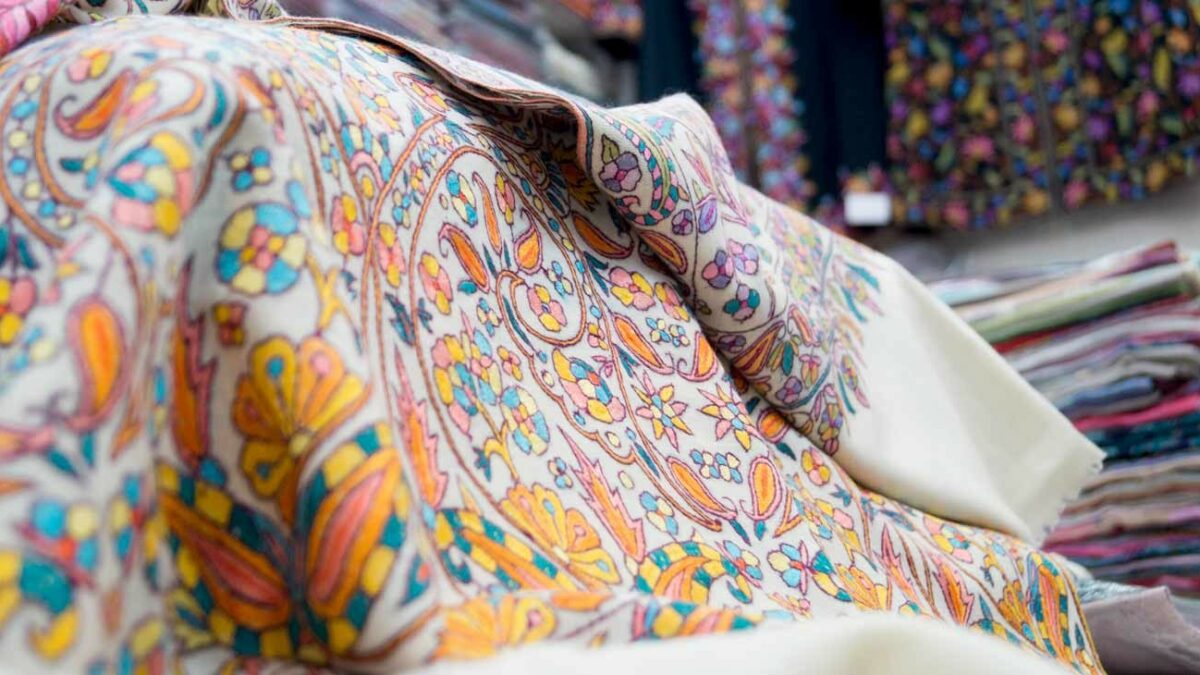When it comes to choosing the perfect wrap for your ensemble, the world of shawls unfolds a tale of distinct elegance and craftsmanship. Among the myriad options, the Pashmina shawl stands apart from its more commonplace counterparts. Let’s unravel the intricacies that make Pashmina shawls special and explore the unique qualities that elevate them beyond the ordinary.
At its essence, a Pashmina shawl is not just an accessory; it’s a masterpiece woven from the fine wool of Himalayan goats. The term “Pashmina” itself draws from the Persian word “Pashm,” denoting wool. This exquisite material is sourced from the high-altitude regions of the Himalayas, specifically from the soft fleece of Changthangi goats. The result is a fabric of unparalleled softness and lightweight warmth, setting Pashmina shawls in a league of their own
Shawls, those versatile pieces of fabric that gracefully drape over shoulders, serve dual purposes – a stylish accessory to enhance your look and a warm companion on chilly days. However, within this realm of chic essentials, the Pashmina shawl emerges as a symbol of luxury and cultural richness. What sets it apart from the regular shawls that adorn countless wardrobes?
Understanding the Basics:
Before we dive into the details, let’s get the basics right. A shawl is a piece of fabric you wear on your shoulders for style or warmth. The word “Pashmina” comes from “Pashm,” a Persian term for wool. Now some of you may ask what is pashmina made of – Pashmina shawls are made from super soft wool from Himalayan goats, giving them a cozy and lightweight feel. They’re like the VIPs of the shawl world, crafted with centuries-old skills.
Material Matters:
The biggest difference between a Pashmina shawl and a simple one is the stuff they’re made of. Pashmina shawls are created from the super-fine wool of Himalayan goats, making them crazy soft and warm. Skilled workers spin and weave the fibers by hand, making a fabric that’s not just soft but also feels almost weightless.
Simple shawls, though, can be made from all sorts of materials like cotton, silk, or even synthetic stuff. They’re cool for everyday use, but they won’t give you the same warmth and luxury as a Pashmina shawl.
Weaving Wonders:
Making a shawl involves weaving, and this is where things get interesting. Pashmina shawls go through a detailed process with traditional handlooms. Skilled artists spend a lot of time carefully weaving each one, sometimes taking weeks or even months for a single shawl.
Simple shawls, on the other hand, are usually made with machines. It’s quicker and cheaper, but they miss the personal touch and uniqueness you get with handcrafted Pashmina shawls.
Artisanal Expertise:
Crafting Pashmina shawls is a big job that needs skilled workers. These experts, often from places with a history of Pashmina weaving, bring serious knowledge and a love for tradition to their work. The cool designs on Pashmina shawls often tell a story through traditional patterns and motifs, showing off the artist’s mad skills.
Simple shawls, being mass-produced by machines, don’t have the same handmade touch. They might look good, but they don’t carry the same cultural weight and history as Pashmina shawls.
Cultural Significance:
Pashmina shawls are more than just fashion items; they’re a piece of culture. The people who make them pass down their skills through generations, making it a part of who they are. Having a Pashmina shawl isn’t just about looking stylish; it’s like having a piece of history and tradition with you.
Simple shawls are more about being practical and looking good, but they don’t have that deep cultural vibe. They might keep you warm, but they don’t carry the same cultural story as Pashmina shawls.Beyond the tactile and visual appeal, Pashmina shawls carry a profound cultural significance. The craftsmanship involved is not merely a skill; it’s a tradition passed down through generations. Artisans, often hailing from regions with a rich history of Pashmina weaving, infuse their creations with traditional motifs and patterns, turning each shawl into a canvas that tells a story. Owning a Pashmina shawl, therefore, is akin to possessing a tangible link to a cultural heritage.In contrast, regular shawls, being more utilitarian in nature, lack this cultural depth. While they serve the practical purpose of keeping you warm and stylish, they don’t carry the same historical and cultural resonance as Pashmina shawls.
The distinction doesn’t stop at the material; it extends to the meticulous craftsmanship involved in creating these distinctive wraps. Pashmina shawls are born from a labor-intensive process, where skilled artisans employ traditional handloom techniques. The delicate nature of Pashmina fibers demands an intricate touch, and each shawl is a testament to the artisan’s dedication, taking weeks or even months to complete.
Conclusion:
In the world of fashion, knowing the difference between a Pashmina shawl and a regular one is like understanding a secret language of tradition, skill, and culture. Regular shawls are cool for everyday use, but Pashmina shawls are like the rockstars of the shawl world. By knowing and appreciating these differences, we can make smarter choices and enjoy the artistry that goes into making these amazing pieces. So, the next time you wrap a shawl around yourself, think about the story it tells and the craftsmanship it represents.


